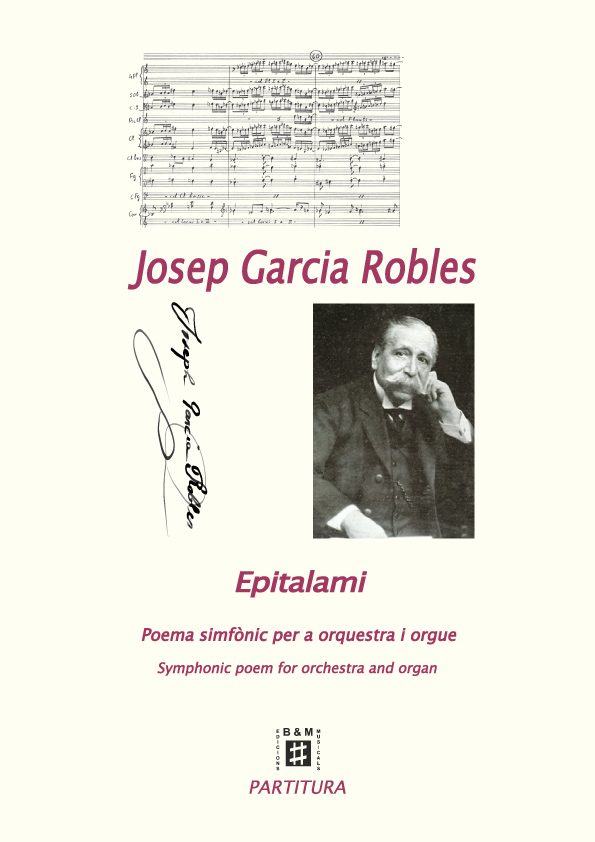Description
Author
Format
Instrumentation
Plantilla
Duration
Pages
Year of composition
ISMN
Ref.
This is a symphonic poem in three movements, with a fairly simple orchestration. We have transposed the original clarinet part from A to the more common B-flat clarinet. Similarly, the horn has been written in its standard transposition in F. The harp part has been adjusted to match the key of the piece, as in certain passages—following older practices—the key signature used during modulations did not align with the rest of the composition. To avoid discrepancies and confusion, we have chosen to write the harp part with the same key signature as the rest of the ensemble.
The first movement, titled Acompanyament (Accompaniment), begins with a two-bar motif that is repeated several times in the strings during the first eight bars. This motif is then developed between bars 9 and 12 in the woodwinds and later quoted by the harp in contrast with elements of the minor mode. Following this, there is a transitional fragment in 6/8 (the initial meter is 4/4), which reaches its climax in bar 25. From this point, modulations and chromaticisms unfold until bar 39, at times contradicting the sustained notes of the organ. When interpreting this movement, we recommend not focusing too heavily on the dynamics indicated for the organ and to always perform its part in pianissimo. The string writing from bars 39 to 50 consists of long, high notes, sometimes in divisi, depending on the string section. From bar 50 onward, the winds, which had been calmly accompanying the strings, fall silent, giving way to rapid string movements leading to bar 58. In the subsequent bars, the highest strings play thirty-second notes and move by joint degrees, preparing for the orchestral climax in bar 67, where the 6/8 time signature is briefly but significantly reintroduced, culminating in a very brief restatement of the main theme by the woodwinds and brass.
The second movement, Noces (Wedding), can be described as ecclesiastical or liturgical in character. The organ begins with an introduction reminiscent of a cathedral organist’s performance at a royal wedding, evoking the solemnity of the most famous wedding marches. Once the organ introduction concludes, the strings and winds play long, sustained notes, transitioning to the arpeggios of the harp and a solo horn that enters at bar 45. These melodies and the orchestration evoke the imagery of the bride and groom’s procession, capturing the ceremony’s essence and occasionally recalling elements of impressionist music.
The third movement, Idil·li (Idyll), features a theme with clear pastoral overtones. In the central section, the first motif from the first movement is referenced again and is ultimately taken up by the solo horn in section C, bringing the work to its conclusion.




















There are no reviews yet.